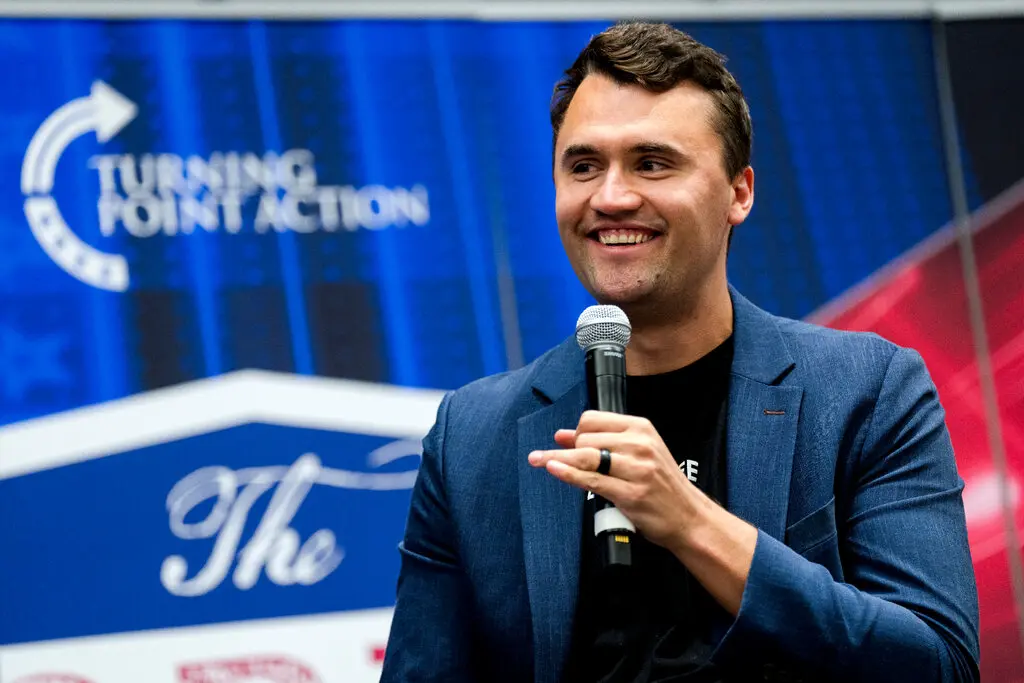On 10 September 2025, during a scheduled outdoor event at Utah Valley University in Orem, Utah, Charlie Kirk — a prominent conservative commentator and organizer — was fatally shot. WHYY+3Wikipedia+3CBS News+3 What has followed is a deeply complex investigation marked by questions about motive, security failures and the broader implications for political violence in America.
The Scene and Immediate Response
Kirk had appeared on campus for a debate-style event when a single shot rang out from a rooftop above the courtyard, striking him in the neck. CBS News Security-camera footage and dispatch audio suggest the shooter ascended a nearby building, fired the shot and fled into wooded terrain. Reuters+1 The Federal Bureau of Investigation (FBI) immediately got involved, offering up to $100,000 for information leading to the shooter’s identification. Federal Bureau of Investigation+1
Security and Preparedness Concerns
One of the earliest focal points for investigators and media alike has been the question of how security was handled that day. A review by the Associated Press showed the university’s security force had only six campus officers monitoring the event and lacked key precautions such as drone surveillance or rooftop sweeps. Police1 Given the presence of tall surrounding buildings and a large audience, the scene provided a vulnerable vantage point — one that was apparently exploited.
The Suspect and Evidence Trail
On 14 September, authorities announced that a 22-year-old, Tyler Robinson, was in custody in relation to the killing, and charged with aggravated murder, firearm discharge, obstruction of justice and other counts. WHYY+1 Prosecutors say Robinson sent a text message to his partner stating he “had enough of [Kirk’s] hatred” and left a note in which he indicated: “I had the opportunity to kill [Kirk] … and I’m going to take it.” WHYY+1 DNA evidence reportedly matched on a towel wrapped around the rifle found at the scene. WHYY+1 Meanwhile, bullet casings were found bearing inscriptions and memes tied to online subcultures, further complicating the profile of the suspect and raising questions about motive. PBS
Investigation Oversight, Broader Inquiries & Messaging
The investigation has also drawn scrutiny for how it is being managed. FBI Director Kash Patel faced questioning from Congress regarding his handling of the case, including an instance where he prematurely tweeted a suspect was in custody and later walked back the claim. ABC News+1 Authorities say they’re investigating not just the shooter but any associates who may have helped via online chats (such as on Discord), noted to involve multiple participants. ABC News+1
MOTIVE and Political Context
Even though investigators have formally described the incident as a “targeted attack,” the exact motive remains under exploration. Governor Spencer Cox labelled it a “political assassination” but admitted that no definitive evidence publicly links the suspect to a specific ideological group or foreign influence. CBS News The politicised nature of the event — given Kirk’s prominence in conservative youth movements and his affiliation with Turning Point USA — means the investigation carries implications for free speech, campus security, and political-violence prevention.
Outstanding Questions
Several key questions remain unanswered:
-
Why was only one shot fired and how did the shooter gain access to the rooftop so efficiently?
-
Were there others involved — either in planning or logistical support? Investigators say “yes, we are running them all down.” ABC News
-
What role did online radicalisation or gaming/internet culture play in motivating the shooter? The inscriptions on the casings hint at deeper subculture involvement. PBS
-
How will universities and event hosts overhaul security — particularly when high-profile speakers with contentious views are involved?
The Bigger Picture
The killing of Charlie Kirk has sent ripples across U.S. politics. It underscores how public figures, particularly those polarising, may face real physical danger. It also challenges institutions — schools, law enforcement, social-media platforms — to weigh speech protection against incitement and violence. Meanwhile, the probe continues, and as more evidence surfaces, the full story of how and why this attack happened will come into sharper focus.
For 42 critical seconds, chaos ruled the stage — and the one man sworn to stop it did nothing.
His code name was Redline, a veteran guard with years of service on the city’s most elite protection team. But when the attack began, he stood completely still — motionless, unreadable, as if frozen in time.
That moment, captured in newly surfaced security footage, has now become the center of a growing storm. Investigators say Redline’s behavior during those 42 seconds might hold the key to understanding what truly happened that night — and why.
The Frozen Guard
The footage begins with Redline standing at his assigned post near the stage. The crowd is roaring, lights are flashing, and his earpiece crackles with coded radio chatter. Then — the first sound of panic.
But instead of reacting, Redline doesn’t move. His eyes track something unseen, his hand hovers near his weapon… and then drops. For 42 seconds, he remains completely still as chaos erupts around him.
When questioned later, Redline blamed a “battery failure” in his communication gear. Strangely, two other guards made the exact same claim. For investigators, that coincidence was impossible to ignore.
The Missing Footage
Adding to the mystery, two cameras that should have captured the attacker’s approach were mysteriously offline during the event. Both feeds ran through Redline’s security console — a system he personally maintained.
Officials called it a technical malfunction. But internal reports suggest the cameras were manually disabled minutes before the attack.
When investigators cross-checked access logs, they found something chilling: the override command came from Redline’s station.
Was it sabotage? Negligence? Or something else entirely?
The Interrogation
When Redline was finally brought in for questioning, he didn’t resist. According to witnesses, he appeared calm — almost serene. Investigators pressed him about the missing footage, the synchronized equipment failures, and his inaction.
He offered only one cryptic response:
“You already know.”
That single sentence has haunted everyone working the case since. Was it a confession, a warning, or something more sinister?
A Pattern of Silence
Further digging revealed that Redline’s team had handled several high-risk operations in the past year — all of which involved unexplained equipment issues and incomplete surveillance records. The pattern is too consistent to ignore, and now authorities are re-examining those past incidents under new suspicion.
Some insiders believe Redline may have been following orders from someone higher up. Others think he was part of a cover-up — a silent operative ensuring that certain details would never see daylight.
The Investigation Widens
As digital forensics experts piece together the missing footage, fragments of deleted files are beginning to emerge. One recovered clip reportedly shows a figure moving across a rooftop moments before the chaos began — a figure that doesn’t match any official description released that night.
Meanwhile, members of Redline’s security unit have gone silent. Phones disconnected. Social accounts wiped clean. It’s as if the entire team vanished into thin air.
The Question That Remains
Now, weeks later, the story continues to unfold. What happened during those 42 seconds of silence? Was Redline a traitor — or a scapegoat for something much deeper?
Until the full truth surfaces, one thing is certain:
Those missing seconds have changed everything.
And somewhere, hidden behind layers of secrecy and silence, the real story of that night is still waiting to be told.


